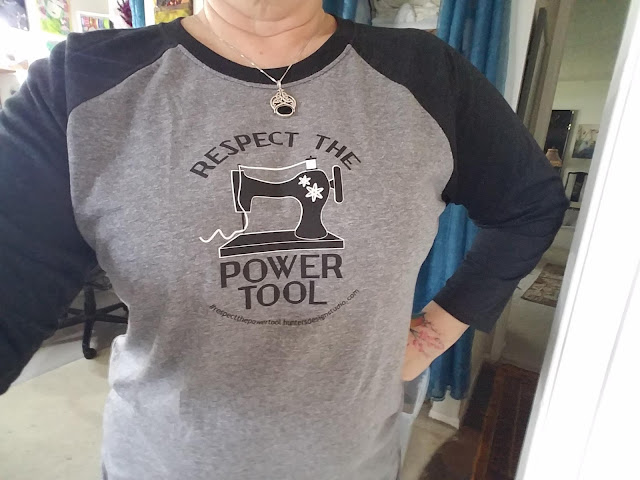Century Quilt
Recently I was commissioned to quilt a top that was 100 years old.
The quilt top had been purchased on Ebay and the new owners had purchased the backing material and sent it along to me.
I was amazed when I received it to discover it was all hand pieced. I considered a long while before deciding that it would still be ok to machine quilt it.
The materials in this top are very open weave and were rather difficult at first. I went over the entire top with a fine tooth comb (expression, no actual comb was used) and hand stitched all the places the seams had started (or continued) to come apart.
While I did I had fun wondering what the original maker intended this for. How did it come to be unfinished. It had all been sewn together including the borders.
These are not my colors, nor type of design nor really anything else that appealed me which is fine given my only task was to simply get it finished.
I didn't work alone as you can see;
I had my helpers:
An invaluable tool for me on this quilt was my basting spray. After I had hand stitched all the open seams I could find I really needed a way to stabilize it. As much as I don't like (nor do I use this on anything any more) using this type of tool it really worked well on keeping the wavyness down on this top. There were many squares that seemed to have stretched out completely next to their more stable row mates. You can see some in the photo below.
These are not my colors, nor type of design nor really anything else that appealed me which is fine given my only task was to simply get it finished.
Then there was a lot of this type of piecing. This is on the top, not underneath.
You can see how beautifully the machine stitching is hidden on the side seams, it also gives you an idea of how large a weave the fabrics are.
I decided to simply stitch in the ditch (to keep the cost down & do minimal machine work on it. It really bothered me to put it under the machine given it had all been hand sewn. Good thing that wasn't my call. In all fairness; the machine stitching will be what will probably preserve this quilt for many more years to come.
My daughter loveed this quilt. I stood there with the frowny face of 'really?' .
I can see the allure now that it's all done. It looked so very homey when I had it on my bed for final inspection, thread clipping & lint rollering. Since the owners have a Century home they had purchased this quilt top to go with it. Very nice. I'd love to see the room/bed they put it in. If I am given a photo to share I will.
I would like to say that Aurifil; yet again, saved my bacon on this project. Their 50w medium grey is truly invisible in this quilt letting the original design shine and yet keeping all those pesky fraying seams together. I had to do some tricksy maneuvering on some of those seams and of course I needed a thread that could keep up with them and not break each time I needed to sew sideways a bit. I bet the original quilt maker never anticipated her/his quilt would be completed with state-of-the-art; fine Italian thread!
With all these threads to choose from; I went with what I knew wouldn't break, wouldn't be truly seen and what would preserve the integrity of the original design.
I even used it on the hand stitching I did in the repair work as well.
seeing the fraying edges
Here's the backing material that was sent. Thankfully there was enough for the binding as well.
These are all seams that are on top, not underneath.
This one was a 1 1/2" by 2" rectangle inside a square.
I left all these original stitches in even after I did the hidden reseaming.
I can say once it was all completed it weighs a lot!
Very warm indeed. For those of you wondering the batting was Warm & White.
I was attaching the binding here. Ollie only stayed for a bit.
All done & ready to ship back to it's owner
















These were all scraps from utility fabrics, and I think that your choice of SITD quilting was perfect for it. I was surprised at the hand sewing - it looked like practice work from a young person, or perhaps someone who was not much of a seamstress. It will be the perfect keepsake for the owner though. I know it's difficult to put machine to hand sewn cloth, but there are times when it is expedient and makes something that was unusable before a treasure for a family.
ReplyDeleteLooks like it was a daunting project! You did a great job on a real challenge.
ReplyDeleteStacy, Nicely done! I never hesitate to recommend your work!
ReplyDeleteThank you so much Peggy for the referral! I appreciate it very much!
DeleteDo you think they may have been hand-loomed? I wonder if they were scraps from dresses--those plaids were very popular in the late 1800s. Makes me wonder if someone hadn't either made or found a pile of weaving samples, then decided what to do with them. I agree, it's not terribly attractive, but it tells a story.
ReplyDelete